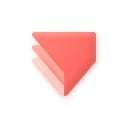ProtoPie vs Figma: Which UX/UI tool is right for you?
- 01ProtoPie vs Figma: overview
- 02What's the difference between ProtoPie and Figma?
- 03ProtoPie pros and cons
- 04Figma pros and cons
- 05ProtoPie compared to Figma
- 06Figma compared to ProtoPie
- 07Features comparison
- 08ProtoPie vs Figma: Which is the best for your business?
- 09Promotions on Design software
- 10Alternatives to ProtoPie & Figma
Save up to $2,844 on ProtoPie
Save up to $2,844 on ProtoPie
If you're a designer or part of a UX/UI team, then having the right prototyping tool is essential. The right tool not only helps you create interactive and high-fidelity prototypes but also streamlines collaboration and feedback processes within your team. A reliable prototyping tool ensures that your design ideas can be effectively communicated and tested, ultimately leading to better user experiences. However, with so many options available, how do you choose the right one for your needs?
This article is a great starting point. In it, we compare two leading prototyping tools—ProtoPie vs Figma. With our detailed comparison of their key features, crucial differences, and pricing structures, you’ll have the information you need to make an informed decision.
ProtoPie vs Figma: overview
ProtoPie and Figma are two leading contenders in the field of design software and prototyping tools, each offering unique advantages tailored to different design workflows and user needs.
ProtoPie, known for its advanced interaction capabilities and ease of use, excels in creating high-fidelity, interactive prototypes that closely mimic the final product. It's a preferred choice for designers and teams who need to craft detailed interactions and complex animations without writing code. In contrast, Figma is a comprehensive design tool that combines UI/UX design, prototyping, and collaboration in a single platform. With its cloud-based approach, Figma is highly favored for its real-time collaboration features, allowing multiple team members to work on the same design file simultaneously.
To make an informed choice between ProtoPie and Figma, it's essential to assess your specific design needs, team collaboration requirements, and the complexity of your prototypes. ProtoPie is a top pick for those needing a tool focused on advanced interactions and high-fidelity prototypes, while Figma is the go-to solution for teams seeking a versatile, collaborative platform that covers the entire design spectrum.
What's the difference between ProtoPie and Figma?
ProtoPie and Figma are two prominent tools in the design and prototyping space, each offering powerful features tailored to different aspects of the design process. However, when choosing between them, it's essential to understand the key distinctions that set them apart.
The primary difference lies in their core focus and functionality. ProtoPie is a specialized prototyping tool designed to create high-fidelity, interactive prototypes with complex animations and interactions. It allows designers to bring their ideas to life without writing code, making it ideal for creating prototypes that closely mimic the final user experience. ProtoPie's strength is in its ability to handle intricate interactions, such as multi-finger gestures, sensor input, and dynamic variables, which are crucial for testing and validating advanced user flows and behaviors.
On the other hand, Figma is a versatile all-in-one design tool that combines UI/UX design, prototyping, and real-time collaboration within a single platform. Figma is particularly renowned for its cloud-based nature, allowing multiple team members to work on the same design file simultaneously. This makes Figma an excellent choice for teams that prioritize collaboration and want to streamline their design process from ideation to prototype. While Figma offers prototyping capabilities, its focus is more on overall design and collaboration, rather than on creating highly complex interactions.
Another key difference is in their integration capabilities. Figma integrates seamlessly with a wide range of third-party tools and plugins, enhancing its functionality and allowing teams to extend its capabilities according to their workflow needs. ProtoPie, while more specialized, also offers integrations but is often used in conjunction with other design tools to enhance the prototyping phase specifically.
ProtoPie is ideal for designers who need to focus on detailed interactions and high-fidelity prototyping, whereas Figma is best suited for teams looking for a comprehensive, collaborative design tool that covers the entire design process.
ProtoPie pros and cons
What are the advantages of ProtoPie?
- Advanced interaction capabilities: ProtoPie excels in creating complex, high-fidelity prototypes with detailed interactions and animations, such as multi-finger gestures, sensor inputs, and dynamic data-driven behaviors.
- Code-free prototyping: Designers can create intricate prototypes without needing to write any code, making it accessible to those who may not have programming skills but still want to build sophisticated interactions.
- Cross-platform prototyping: ProtoPie supports prototyping for a wide range of devices, including mobile, web, desktop, and even IoT devices, offering flexibility for various project needs.
- Realistic testing: With ProtoPie's ability to simulate real-world interactions and conditions, designers can create prototypes that closely mimic the final product, allowing for more accurate user testing and feedback.
- Integration with other design tools: ProtoPie integrates well with popular design tools like Sketch, Adobe XD, and Figma, allowing designers to import their designs seamlessly and enhance them with advanced interactions.
What are the disadvantages of ProtoPie?
- Steeper learning curve: Due to its advanced features and capabilities, ProtoPie can have a steeper learning curve, especially for designers who are new to prototyping or not familiar with interaction design.
- Limited collaboration features: Unlike some other design tools, ProtoPie does not offer robust real-time collaboration features, which can be a drawback for teams that need to work together on prototypes simultaneously.
- Less focus on UI design: ProtoPie is highly specialized for prototyping and interaction design, but it lacks the comprehensive UI design tools found in more all-in-one platforms like Figma, which could require designers to use additional tools.
- Higher cost: ProtoPie is generally more expensive compared to other prototyping tools, especially for teams or individuals who need access to its full range of features.
- Limited third-party integrations: While ProtoPie offers some integrations, it has fewer third-party integrations compared to more versatile design platforms like Figma, which may limit its flexibility in certain workflows.
Compare ProtoPie to other tools
Figma pros and cons
What are the advantages of Figma?
- Real-time collaboration: Figma allows multiple team members to work on the same design file simultaneously, making it an excellent tool for collaboration. Designers, developers, and stakeholders can all view and comment on designs in real-time, which streamlines the feedback process.
- Cloud-based platform: As a cloud-based tool, Figma enables easy access from any device with an internet connection, without the need for local installations or manual file sharing. This is particularly beneficial for remote teams or those working across different locations.
- Comprehensive design toolset: Figma offers a full suite of design tools, covering everything from wireframing and UI design to prototyping and vector editing. This all-in-one approach means that designers can manage the entire design process within a single platform.
- Plugin ecosystem: Figma has a robust ecosystem of plugins that extend its capabilities. These plugins range from productivity tools and design assets to automation and developer handoff enhancements, making it highly customizable to specific workflow needs.
- Cross-platform compatibility: Figma works seamlessly across different operating systems (Windows, macOS, Linux) since it is browser-based, ensuring that all team members, regardless of their device, can access and contribute to projects.
What are the disadvantages of Figma?
- Limited offline access: Since Figma is primarily cloud-based, its functionality is limited when offline. While there are some offline capabilities, they are not as robust, which can be a drawback for users who need to work without an internet connection.
- Performance issues with large files: Figma can experience performance slowdowns when working with very large files or complex designs, especially on lower-end hardware, which can hinder productivity during intensive design sessions.
- Prototyping limitations: While Figma includes prototyping features, they are not as advanced as those found in specialized tools like ProtoPie. Figma's prototyping capabilities are generally sufficient for basic interactions but may fall short for more complex animations or interactions.
- Subscription cost: Figma's pricing model, particularly for teams and enterprises, can become expensive. The free version is quite limited, and unlocking more advanced features requires a subscription, which might be costly for smaller teams or individual designers.
- Learning curve for new users: While Figma is user-friendly, new users may find the learning curve steep, particularly when it comes to mastering its full range of features and integrating plugins effectively into their workflow.
Compare Figma to other tools
ProtoPie compared to Figma
ProtoPie and Figma serve distinct roles in the design process, with ProtoPie excelling in creating complex, high-fidelity prototypes featuring advanced interactions and animations, while Figma offers an all-in-one solution for UI/UX design, collaboration, and basic prototyping. ProtoPie is ideal for designers focused on detailed interaction design without the need for coding, allowing for realistic user testing.
In contrast, Figma's strength lies in its real-time collaboration and comprehensive design toolset, making it a versatile choice for teams managing the entire design process in one platform.
Is ProtoPie better than Figma?
Whether ProtoPie is better than Figma depends on the specific needs of your design project. ProtoPie excels in crafting high-fidelity, interactive prototypes with advanced animations, making it the superior choice for projects requiring detailed interaction design and realistic user testing.
However, Figma's strength lies in its versatility as an all-in-one design platform that supports UI/UX design, collaboration, and basic prototyping, making it ideal for teams who need a comprehensive tool for the entire design process. ProtoPie is better for interaction-heavy prototyping, while Figma is more suited for collaborative design and overall project management.
What is ProtoPie best used for?
ProtoPie is best used for creating high-fidelity, interactive prototypes that closely mimic the final product's behavior, making it ideal for testing complex user interactions and animations. It allows designers to build detailed prototypes with advanced features like multi-finger gestures, sensor input, and dynamic variables without writing any code.
This makes ProtoPie particularly valuable for projects where precise interaction design is critical, such as mobile apps, IoT devices, and other products requiring sophisticated user experiences. By simulating real-world interactions, ProtoPie helps designers validate and refine their designs before development, ensuring a seamless user experience.
Can ProtoPie replace Figma?
ProtoPie cannot fully replace Figma, as they serve different purposes within the design process. While ProtoPie excels in creating advanced, high-fidelity prototypes with complex interactions and animations, it lacks the comprehensive design, layout, and collaboration tools that Figma offers. Figma is an all-in-one platform that covers the entire design workflow, including UI/UX design, wireframing, and real-time team collaboration.
ProtoPie complements Figma rather than replaces it, serving as a specialized tool for refining and testing interactions after the core design work has been completed in Figma or a similar design tool.
Is ProtoPie cheaper than Figma?
ProtoPie’s pricing is generally not cheaper than Figma, especially when considering the overall value each tool provides. Figma offers a free tier with limited features and a subscription model for more advanced capabilities, making it accessible to a wide range of users.
ProtoPie, on the other hand, is a specialized tool focused on advanced prototyping, and its pricing reflects this niche functionality, often making it more expensive for teams or individuals who need its full feature set. While ProtoPie delivers powerful interaction design tools, its cost can be higher, especially when compared to Figma's broader, more flexible pricing options.
Is there a better Design software than ProtoPie?
While ProtoPie offers powerful tools for creating advanced interactive prototypes, it's important to explore alternative prototyping software to determine the best fit for your specific design needs.
Notable alternatives to ProtoPie include Figma, Adobe XD, Axure RP, and InVision.
Choosing the ideal prototyping tool depends on factors such as the complexity of your projects, collaboration requirements, platform preferences, and budget. ProtoPie excels in high-fidelity interaction design, but evaluating these alternatives can provide additional perspectives and help you make a well-informed decision that aligns perfectly with your design process, team dynamics, and project goals.
30% off the Pro plan for 1 year on ProtoPie
Get 30% off the Pro plan for 1 year on ProtoPie and up to $2,844 savings with Secret.
Figma compared to ProtoPie
Figma and ProtoPie cater to different aspects of the design process, with Figma excelling as an all-in-one design tool for UI/UX design, wireframing, and real-time collaboration, while ProtoPie specializes in creating high-fidelity prototypes with advanced interactions and animations. Figma is ideal for teams looking for a versatile platform that supports the entire design workflow, from concept to prototype.
In contrast, ProtoPie is best for designers focused on detailed interaction design, allowing them to create complex, realistic prototypes. While Figma offers basic prototyping features, it doesn't match the depth of interaction capabilities provided by ProtoPie.
Is Figma better than ProtoPie?
Whether Figma is better than ProtoPie depends on your design needs. Figma is superior if you're seeking a versatile, all-in-one design platform that excels in UI/UX design, wireframing, and real-time collaboration. It's particularly advantageous for teams working together across different stages of a project, offering seamless integration and a comprehensive toolset.
However, if your focus is on creating complex, high-fidelity prototypes with advanced interactions, ProtoPie is the better choice. Figma's prototyping features are more basic and don't offer the same level of depth and detail that ProtoPie provides for interaction-heavy designs.
What is Figma best used for?
Figma is best used for collaborative UI/UX design, allowing teams to work together in real-time on a single platform. It's ideal for designing user interfaces, creating wireframes, and developing interactive prototypes.
Figma's cloud-based nature ensures easy access from any device, making it perfect for remote teams. Its robust design toolset, combined with powerful vector editing capabilities and an extensive plugin ecosystem, makes it versatile for various design tasks. Figma is particularly effective for projects that require seamless collaboration, design iteration, and developer handoff, streamlining the entire design process from concept to final product.
Can Figma replace ProtoPie?
Figma cannot fully replace ProtoPie, as they serve different purposes within the design workflow. Figma is a comprehensive tool for UI/UX design, wireframing, and basic prototyping with a strong focus on collaboration. However, its prototyping features are more suited for simple interactions and transitions.
ProtoPie, on the other hand, is specifically designed for creating complex, high-fidelity prototypes with advanced interactions, animations, and realistic user experiences. While Figma is ideal for the broader design process, ProtoPie excels in refining and testing intricate interactions, making it a complementary tool rather than a replacement for ProtoPie.
Is Figma cheaper than ProtoPie?
Figma is generally more affordable than ProtoPie, particularly when considering the range of features it offers across its pricing tiers. Figma’s pricing model provides a free plan with essential design and collaboration tools, making it accessible to individuals and smaller teams. Its paid plans, which unlock additional features, are competitively priced, especially given Figma's comprehensive design capabilities.
In contrast, ProtoPie, being a specialized tool for advanced prototyping and interactions, typically comes at a higher cost. This makes Figma the more cost-effective option for teams seeking a versatile design tool, while ProtoPie's pricing reflects its focus on high-fidelity interaction design.
Is there a better Design software than Figma?
While Figma is a leading design tool known for its robust collaboration features and comprehensive UI/UX design capabilities, it's important to consider alternative software options to find the best fit for your specific design needs.
Several notable alternatives to Figma in the design software space include Adobe XD, Sketch, Uizard, and ProtoPie.
Choosing the right design tool depends on factors like your team’s workflow, the complexity of your projects, and specific feature requirements. If you need a versatile, cloud-based platform for collaborative design, Figma is a strong choice. However, exploring these alternatives can offer different strengths and help you make a well-rounded decision that suits your design objectives.
Features comparison
ProtoPie Shines Ahead of Figma for Ease-of-Use
ProtoPie excels in ease-of-use, offering a user-friendly interface that is designed with simplicity in mind. Its intuitive drag-and-drop functionality allows even those with minimal technical expertise to quickly create interactive prototypes without the need for coding. For example, designers can easily simulate complex interactions like multi-finger gestures or sensor-based inputs with just a few clicks, making ProtoPie an accessible tool for beginners.
In contrast, while Figma is a powerful all-in-one design tool, its interface can be overwhelming for newcomers. The multitude of features—ranging from vector editing to real-time collaboration—can require a significant time investment to master, leading to a steeper learning curve for those who are new to the platform.
Figma Steals the Limelight with Extensive Integration Possibilities
When it comes to integration possibilities, Figma truly stands out. This versatile design platform offers extensive compatibility with a wide range of tools, enhancing its functionality and making it a hub for design collaboration. For instance, Figma seamlessly integrates with popular design tools like Sketch, allowing users to import files easily, and with project management platforms such as Jira and Trello, which streamline workflow and task management. Additionally, Figma connects with communication tools like Slack, enabling real-time updates and feedback within teams.
ProtoPie, on the other hand, while exceptional in creating expressive and highly interactive prototypes, falls slightly behind in the integration department. Its integration options are more limited, primarily focusing on design tools like Sketch and Figma for importing designs, and a few collaboration tools, but it lacks the broader third-party tool compatibility that Figma offers. This makes Figma the preferred choice for teams that rely heavily on a diverse set of tools to manage and execute their design projects efficiently.
ProtoPie Excels Ahead of Figma for Real-Time Collaboration and Feedback
ProtoPie shines in real-time collaboration, particularly in environments where immediate feedback and rapid iteration are crucial. While Figma is well-known for its collaborative design features, ProtoPie takes it a step further with its instant feedback system that mirrors actual application environments. This unique capability allows team members and stakeholders to experience prototypes as if they were interacting with the final product, making feedback more relevant and actionable.
For example, if a team is working on a complex mobile app, ProtoPie enables them to test multi-touch gestures or sensor inputs in real time, allowing for on-the-spot adjustments. This feature significantly enhances teamwork and speeds up decision-making, ensuring that all members are aligned with the latest changes, leading to more efficient and cohesive project development.
ProtoPie Outshines Figma with Advanced Logic and Dynamic Prototyping
ProtoPie excels in the use of variables and expressions, providing a level of dynamic interaction that Figma's prototyping cannot match. With ProtoPie, designers can incorporate logic that adapts prototypes based on user input, creating highly engaging and realistic experiences. For instance, a designer could use variables to track user choices or sensor data, enabling the prototype to respond differently depending on the interaction—such as changing the flow based on a user's swipe direction or button presses. This capability makes ProtoPie ideal for simulating complex app behaviors that closely mirror the final product.
While Figma offers interactive prototyping, its functionality is more basic, focusing on transitions and simple interactions, lacking the advanced logic and versatility that ProtoPie provides for creating fully dynamic user experiences.
Figma Outperforms ProtoPie in Version History and Design Iteration
Where Figma clearly outperforms ProtoPie is in its robust version history and design iteration capabilities. Figma allows designers to track every change made to a project, making it easy to revert to previous versions or explore different design directions without fear of losing progress. This feature is particularly valuable in collaborative environments, where multiple team members are working on the same project. For example, if a design decision needs to be re-evaluated, Figma’s version history allows teams to quickly switch back to an earlier state, ensuring that no work is lost.
In contrast, ProtoPie lacks such comprehensive version control, which can be a drawback for teams needing to manage and iterate on complex designs. Figma’s version history not only enhances collaboration but also provides peace of mind, making it a superior choice for projects where design iteration and flexibility are critical.
Both ProtoPie and Figma Offer Strong Multi-Device Testing and Responsive Design Capabilities
When it comes to multi-device testing and responsive design preview, both ProtoPie and Figma stand out as robust tools, offering designers the ability to ensure their work looks great across various devices and platforms. Figma’s responsive design features allow designers to create and test layouts that adapt fluidly to different screen sizes, whether it's a desktop, tablet, or mobile device. For example, designers can preview how a web interface adjusts from a wide desktop view to a narrow smartphone screen, ensuring a seamless user experience.
Similarly, ProtoPie allows designers to test prototypes on multiple devices, including smartphones, tablets, and even IoT devices, offering a real-time preview of how interactions perform across different platforms. This feature is particularly useful when designing complex interactions that need to function consistently across various environments. Both tools provide the necessary capabilities to ensure that your designs are not only visually appealing but also functional and user-friendly across all devices, making them equally reliable for responsive design and multi-device testing.
Figma Excels Ahead of ProtoPie with Comprehensive Design System Capabilities
Figma’s design system truly stands out by enabling the centralization of design elements, styles, and components, which is crucial for maintaining visual consistency across complex projects. For example, in a large-scale app development project, Figma allows designers to create a shared library of UI components like buttons, icons, and typography styles that can be reused across multiple screens and pages. This not only ensures a cohesive look and feel throughout the product but also significantly streamlines the design process, reducing redundancy and saving time.
While ProtoPie offers powerful tools for creating advanced interactions and highly realistic prototypes, it lacks the comprehensive design system features that Figma provides. ProtoPie's focus is more on the interaction and animation aspect rather than on systematizing design elements. This makes Figma a superior choice for teams that need to manage and maintain consistency across large design projects, where reusability and centralized control over design assets are essential for efficiency and quality.
Subscribe to our newsletters.
No FOMO here. Stay up-to-date on all the latest deals and news with our monthly newsletter straight to your inbox like 122,000+ entrepreneurs (+ Get 10% off on on our Premium Membership!)
ProtoPie vs Figma: Which is the best for your business?
ProtoPie is the best tool for you if:
- You need to create complex, high-fidelity prototypes with advanced interactions, such as multi-finger gestures, sensor inputs, and dynamic variables, without writing any code.
- Your project requires realistic user testing and validation, allowing prototypes to behave like the final product, ensuring a seamless transition from design to development.
- You want to design for a variety of devices, including mobile, desktop, and IoT, with the ability to test interactions across different platforms in real-time.
- You value a user-friendly interface that enables designers to focus on interaction design, making it easy to create detailed, interactive prototypes without a steep learning curve.
- You need a specialized prototyping tool that enhances your existing design workflow, integrating well with tools like Sketch and Figma for importing and refining designs.
Figma is the best tool for you if:
- You need an all-in-one design tool that covers UI/UX design, prototyping, and real-time collaboration, allowing your team to work together seamlessly from anywhere.
- You prioritize maintaining visual consistency across projects, with Figma’s robust design system that centralizes components, styles, and assets for efficient reuse and streamlined workflows.
- You want a versatile platform that integrates with a wide range of third-party tools, enhancing your design process and connecting seamlessly with project management and communication software.
- Your team requires a cloud-based solution that provides easy access to projects from any device, ensuring flexibility and uninterrupted collaboration across different operating systems.
- You need basic but effective prototyping features, suitable for creating interactive prototypes that demonstrate user flows, transitions, and simple interactions, directly within the design tool.
Alternatives to ProtoPie & Figma
Promotions on Design software
Start saving on the best SaaS with Secret.
Secret has already helped tens of thousands of startups save millions on the best SaaS like ProtoPie, Figma & many more. Join Secret now to buy software the smart way.











